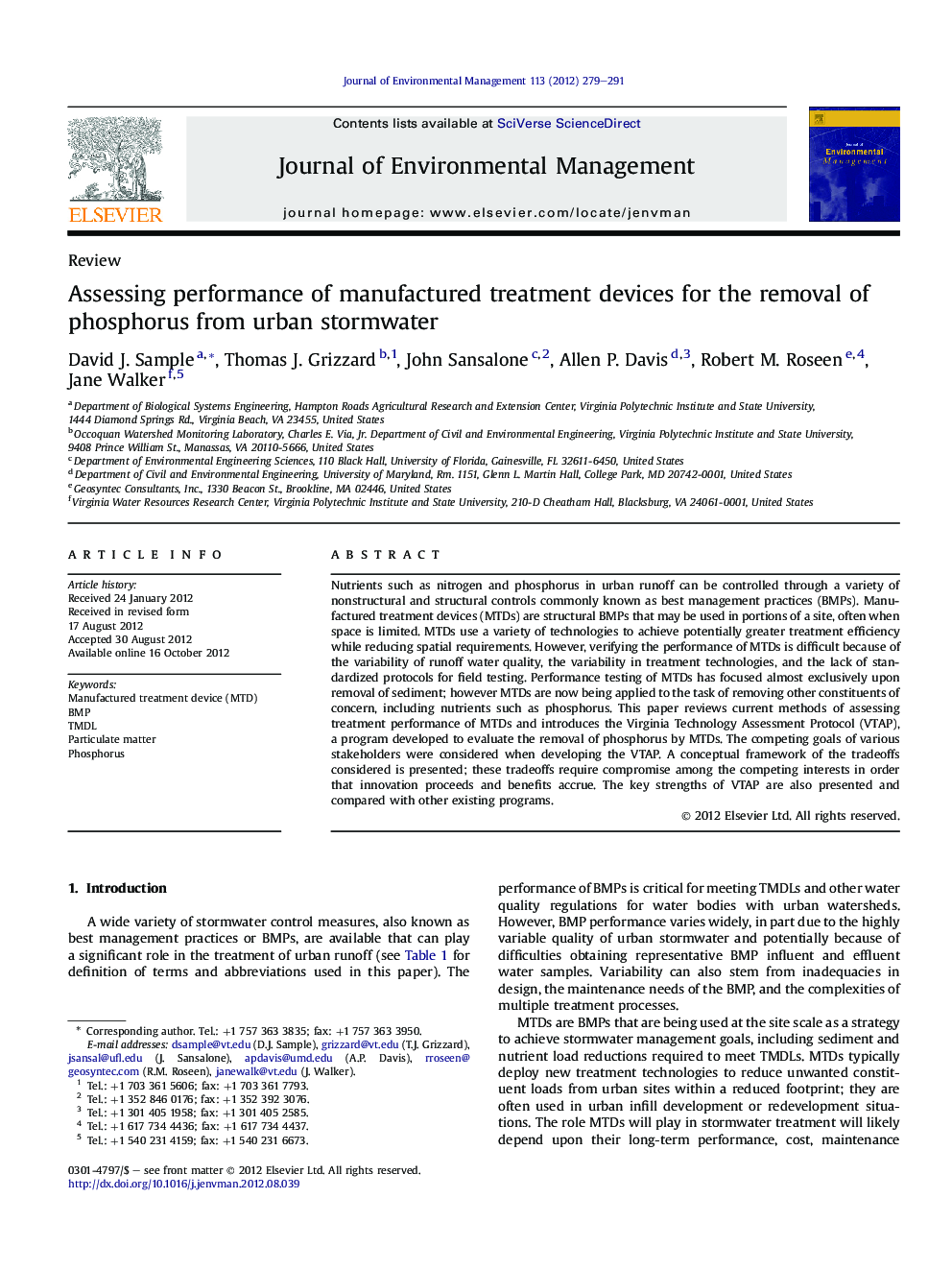| Article ID | Journal | Published Year | Pages | File Type |
|---|---|---|---|---|
| 1056709 | Journal of Environmental Management | 2012 | 13 Pages |
Nutrients such as nitrogen and phosphorus in urban runoff can be controlled through a variety of nonstructural and structural controls commonly known as best management practices (BMPs). Manufactured treatment devices (MTDs) are structural BMPs that may be used in portions of a site, often when space is limited. MTDs use a variety of technologies to achieve potentially greater treatment efficiency while reducing spatial requirements. However, verifying the performance of MTDs is difficult because of the variability of runoff water quality, the variability in treatment technologies, and the lack of standardized protocols for field testing. Performance testing of MTDs has focused almost exclusively upon removal of sediment; however MTDs are now being applied to the task of removing other constituents of concern, including nutrients such as phosphorus. This paper reviews current methods of assessing treatment performance of MTDs and introduces the Virginia Technology Assessment Protocol (VTAP), a program developed to evaluate the removal of phosphorus by MTDs. The competing goals of various stakeholders were considered when developing the VTAP. A conceptual framework of the tradeoffs considered is presented; these tradeoffs require compromise among the competing interests in order that innovation proceeds and benefits accrue. The key strengths of VTAP are also presented and compared with other existing programs.
► Reviews the science of evaluating stormwater treatment devices with respect to phosphorus. ► Evaluates pending water quality standards and TMDL implementation to assess potential treatment needs. ► Compares other manufactured treatment device evaluation protocols and the Virginia Technology Assessment Protocol. ► Reviews the statistical basis for field sampling, and its implications for VTAP. ► Evaluates innovation in stormwater treatment, performance verification, viable financing, and their interchanges.
